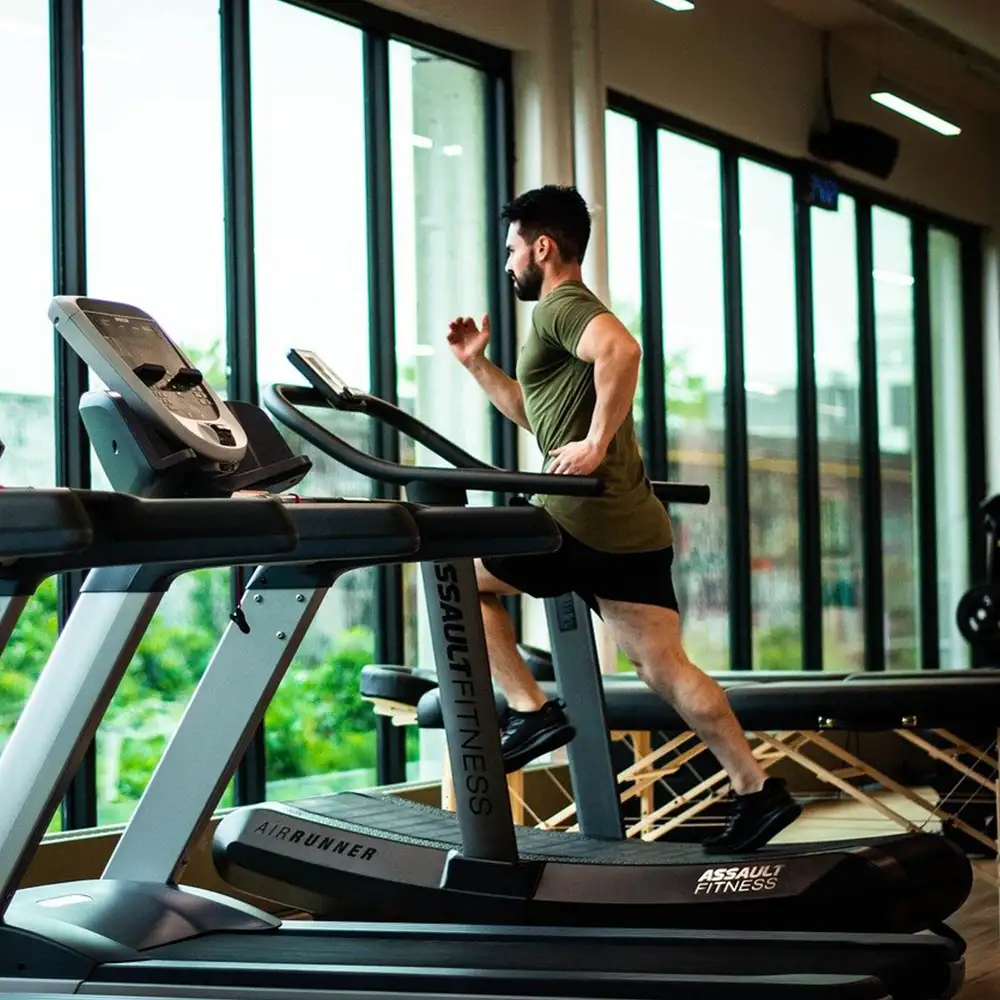An office gym can be hugely beneficial for the health of your workforce, but if your in-house fitness equipment is causing excessive vibration, it’s the floors of your building that may not be fit for purpose. Indeed, the wellbeing and productivity of your people you sought to boost could actually be under threat.
But first, the benefits. The advantages that can be reaped by users of company gyms are well documented. They range from a reduction in stress and absenteeism to increased brain power and deep-sleep time and happier, more motivated personnel. It will also do wonders for your employee retention figures; an office fitness studio is universally acknowledged as a prime perk. This fact has never been more pertinent than it is today with many being wooed back to the office after a WFH hiatus.
In November 2023, RunRepeat, the global athletic shoe-test group, published its 200+ Gym Industry Statistics report. While there are estimated to be over 205,000 gyms across the globe, topping the RunRepeat gym leaderboard is the US, with 41,370 locations with almost 64.19 million Americans holding gym memberships. Germany and UK are second and third on the membership table.
According to Statista, the global gym industry was worth $96.7 billion in 2022. Future Fit Training reports the industry is expected to grow to $131.9 billion by 2028. It seems inevitable that access to a perfectly equipped workplace gym will become the norm.
Mitigating against the potentially catastrophic effects of unwanted gym floor vibration
Whether you’ve already invested in a workplace gym or the plans to deliver one are on the table, the need to take appropriate account of the structural integrity of the designated space cannot be underestimated.
The hefty gym equipment you’ve installed and the impact created by its users will cause exorbitant levels of vibration and, left unchecked, could see surrounding space and floors above rendered unusable.

From high-impact activities such as treadmill sprints to rowing machine sessions and HIIT workouts, it’s vital building owners and managers address and mitigate the potentially catastrophic effects of floor vibration. Crucially, it’s not just the gym users whose concentration and enjoyment are impacted by excessive floor vibration. Unwanted floor vibration caused by constant heel drops on treadmills and rowing machine pulls can make work on neighbouring floors impossible. It’s not uncommon for floors below an office gym to be vacated when vibration levels become intolerable.
Regardless of the flooring materials used – and there are many vibration-reducing platforms and matting that promise to do the job – floor vibration in any gym is inevitable. The extent of the vibration caused by gym equipment and its users, however, is a matter of the floor vibration mitigation tactics employed.
Unwanted floor vibration in your office gym – it’s all about the mass
Traditional methods of reducing floor vibration include adding more concrete or steel to a building floor or using a tuned mass damper (TMD) to counter a degree of vibration. Unfortunately, these methods have considerable cost and environmental implications to consider and, if you have a gym that already has a floor vibration problem, you won’t have the time needed on your side.
Enter active vibration control. CALMFLOOR is the world’s only active mass damper (AMD) that resolves floor vibration problems in office gyms and company fitness centres instantly – straight out of the box. A CALMFLOOR AMD is compact at just 67kgs and can be installed discreetly on beams, floors or soffits. This is also a highly sustainable solution – perfect if you’re looking for an environmentally friendly anti-vibration solution that will tick all your Net Zero boxes.
For new buildings, CALMFLOOR delivers a powerful punch for architects and engineers looking for a proven, cost-effective and unobtrusive solution that will mitigate against potential floor vibration problems.
Excessive office gym vibration: causes and effects
Consider the layout of the gym: rows of treadmills, often positioned to the sides of the space with rowing machines taking centre stage and workout classes close by. Excessive vibration will kick in with even just a few gym users working out. They’ll be pounding treadmill belts with interval bursts, pushing HIIT workouts that make for explosive jumps and landings. It’s clear: unwanted floor vibration in any gym environment is inevitable.
When you’ve identified a floor vibration problem in your office gym, the impact, no pun intended, can be cataclysmic. It’s not uncommon for building owners and managers to be forced to close floors above and below a company gym space. Unwanted floor vibration can easily render focus impossible. Excessive vibration that causes shaking screens, for example, can seriously impact the productivity and wellbeing of other occupants. There’s also the potential for the contravention of a compliance issue that will certainly need to be addressed.
Reduce floor vibration instantly with CALMFLOOR out-of-the-box active mass damping
If you’re a building owner or manager with responsibility for the safe operation of an in-house office gym, don’t leave it until your other building floors become unusable or unsafe. Talk to Engineered Vibration Solutions Ltd about our CALMFLOOR simulation service. It’s the world’s only try-before-you-buy resource for active vibration control.
A recent simulation of a corporate gym, using our customer’s own modal data, proved vibration could be reduced by 60%. The solution: install a network of strategically positioned CALMFLOOR AMDs that deliver vibration control precisely to the pre-determined hot spots that need it.
Talk to an expert today

